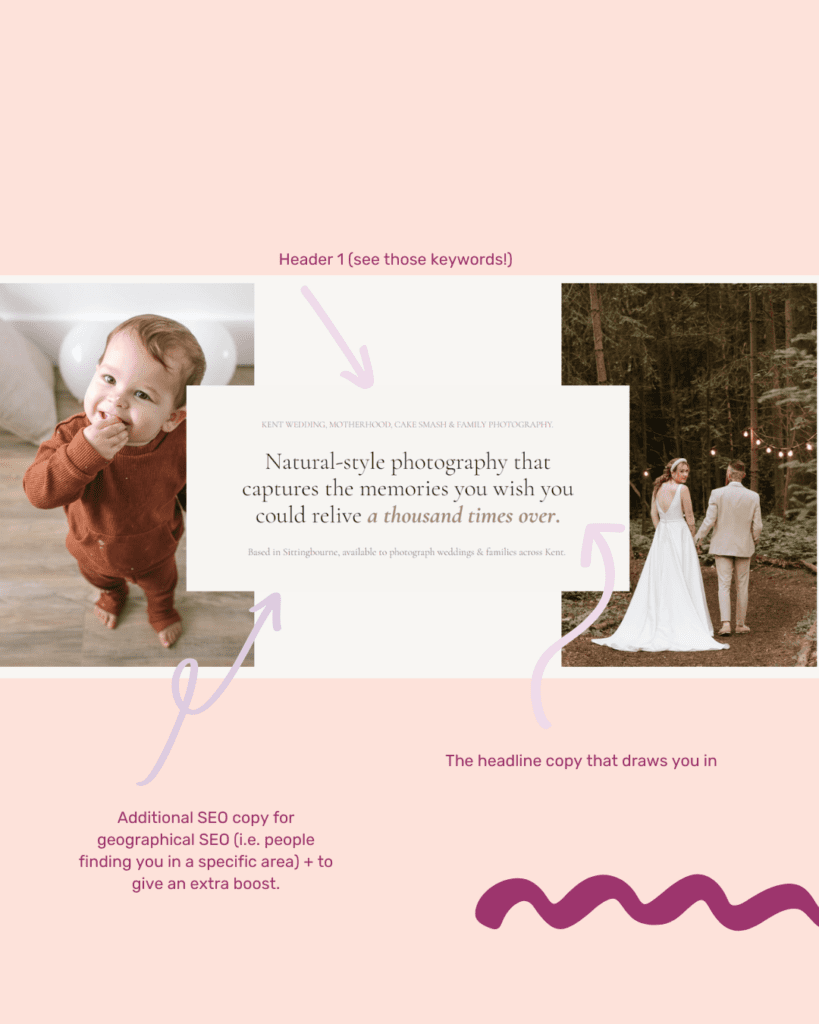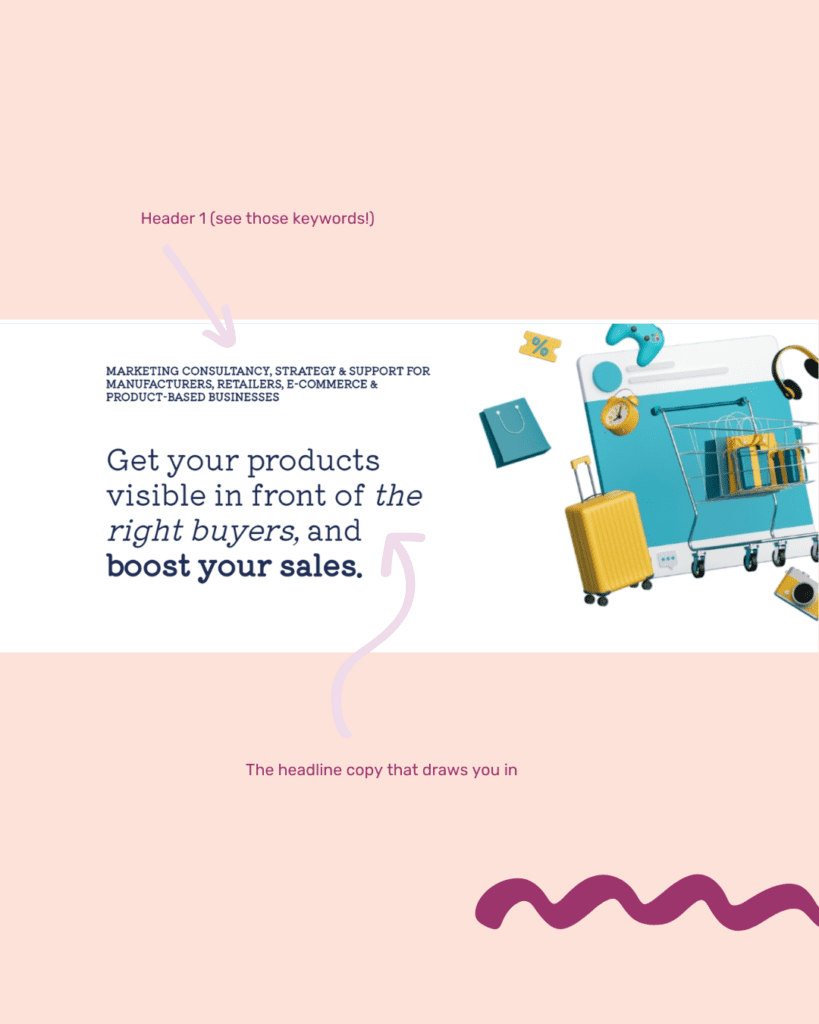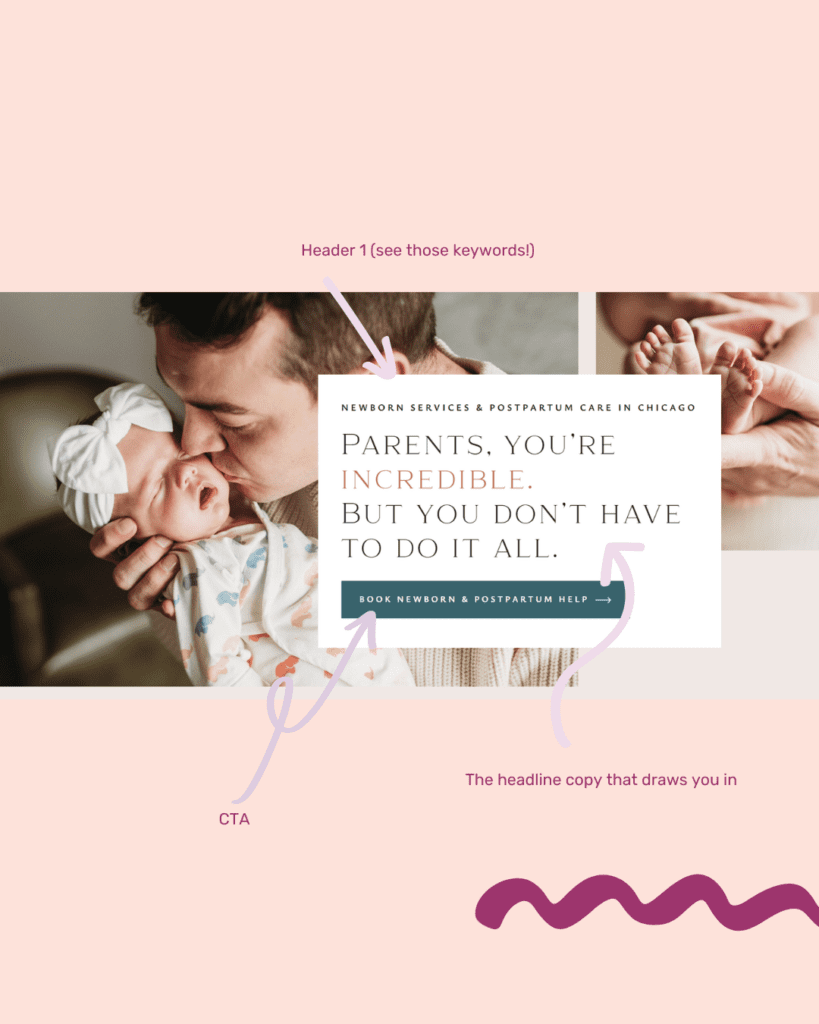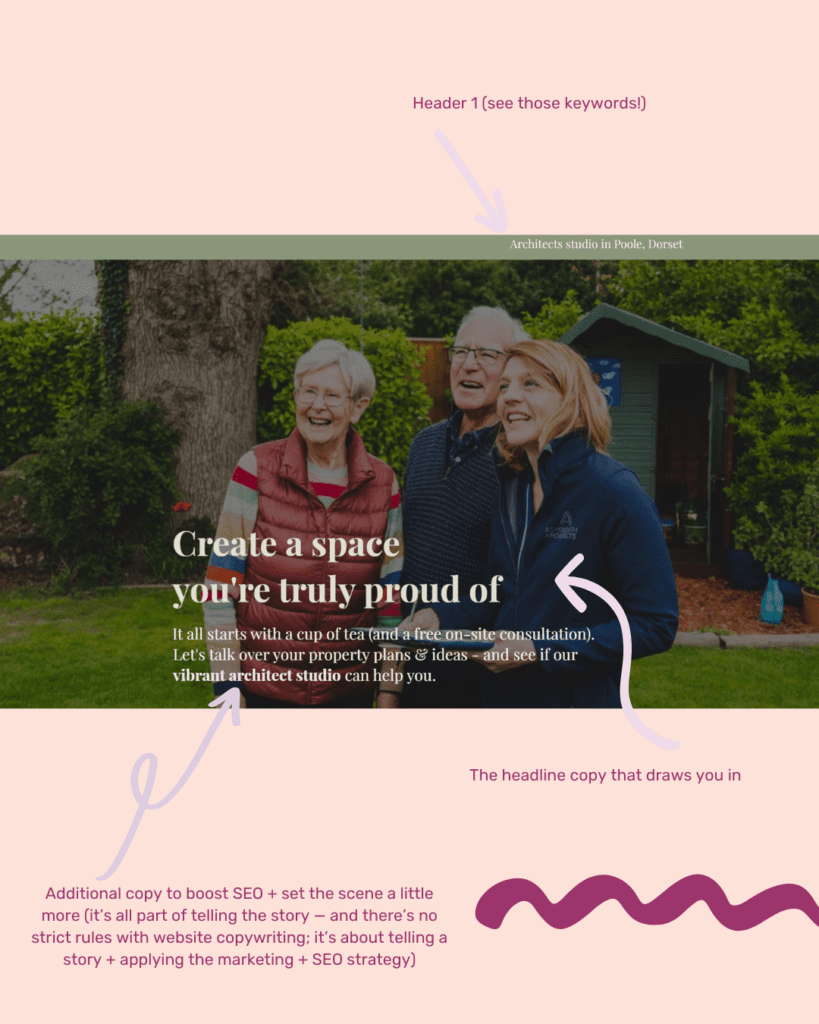When it comes to writing website copy, there’s one part that I will always obsess about. It’s the section I lose sleep over and scrutinise to the max. This lil section arguably deserves that extra level of copywriter TLC. Yep, I’m talking about the hero section of your homepage.
Because, let’s face it: This section is the big HELLO. It greets visitors as soon as they land on your homepage. As Ron Burgundy would say, “I’m kinda a big deal” (here’s where I lose Gen Z). And while every hero section matters, your homepage is the grand stage. The big I AM. The show-stopping moment for your messaging.
Basically: First impressions stick. So, let’s get it right.
No pressure, right?
Okay, maybe a little pressure. But don’t sweat it; I’ve got you. As a pro web wordsmith (if I do say so myself), I’ve honed a process that breaks down writing your homepage hero section into manageable parts.
Let’s dive in.
BTW, if you wanna skip the advice + grab something practical that will tell YOU (yes, you + your specific business) how to write YOUR hero page, head over to my web copy template shop.
Here, you can grab a homepage copy template or even my full website copywriting template. Each website copy template (have I said template enough yet) comes with AI prompts so you can work with ChatGPT to generate copy with *actual* copywriter strategy. No mediocre ChatGPT wingin’ it vibes.
The non-negotiable elements of amazing hero copy
1. The H1 tag (aka your primary headline, aka header ONE)
This is the technical but essential part of your hero section. It might not seem glamorous, but it’s crucial for two big reasons: SEO and audience clarity.
The H1 is where your primary keyword (the word or phrase you want to rank for on Google) goes. Think of it as the foundation of your homepage. It tells search engines, “Hey, this is what this page is all about!” So if you want to be found by your ideal audience, the H1 needs to include what they’re typing into that Google search bar.
Now, this might sound boring, but trust me, it doesn’t have to be. You can still make it sound amazing while being functional for SEO. Pro tip: Make it clear, concise, and relevant to your business. Save the snazzy, attention-grabbing stuff for the next part…
2. The headline hook
This is where the real creative copywriting magic happens. The headline is the bit that speaks directly to your audience. This is your chance to grab their attention and make them say, “Yes! This is exactly what I need!”
The goal here is to stand out and appeal to your ideal client by addressing their biggest desire or pain point (I don’t really like the phrase ‘pain point’ as it’s a bit old hat, but it’s the most basic way to say: The Thing That’s Troubling Them That You Can Help Overcome).
This headline copy has one clear: You want them to feel like you get them, that you understand exactly what they’re looking for, and that your product or service is the solution they’ve been searching for.
Don’t be afraid to get creative here! Use a bold statement, ask a question, or even add a little personality. The more your headline resonates with your ideal audience, the better.
The copywriting sidekicks to consider in your hero section
3. The subheading or short snippet of ‘tear’ copy
Now, not every hero section needs a subheading, but when used well, it can help reinforce your message. A subheading (or sometimes called ‘tear’ copy as it may not be heading up anything) offers a little extra explanation or context to your headline.
Think of it as the sidekick to your main hero copy one-liner. It helps clarify what you’re offering, or it can add a bit more detail about your unique selling point. This is a great place to highlight a specific benefit or feature that will make your audience think, “Okay, I need to keep reading.”
4. The call to action (CTA)
Look, I am not a ‘put-a-CTA-in-or-else’ kinda gal. In fact, sometimes I think they’re strategically irrelevant in the hero section. However, sometimes, they DO work.
In some cases, your hero may be enough to hook your audience, and guide them straight to the next step. Do you want them to contact you? Book a discovery call? Browse your services? Whatever it is, make it clear and compelling.
An example of this would be perhaps a hotel. The CTA in the hero section may be to check rates or reserve a room. However, for a wedding photographer, I’d argue the prospective client may always snoop around a bit before taking the next step (enquiring), so a CTA is redundant here.
If you’re opting for a CTA, it, of course, needs to stand out, but it also needs to be worded in a way that feels inviting and action-oriented. Instead of just saying, “Learn more,” infuse your brand voice into the call-to-action, and make it specific about what the action entails.
Epic hero copy in action
Check out these examples to see how I’ve worked it into real-life client projects.




Your hero section is just the start of your web copy
Get your hero copy right, and I swear it’ll infuse through the rest of your web copy – clarifying your message, amplifying your voice and getting more ‘yes, I’m in!’ clients landing in your inbox.
Ready to hire a copywriter to make that happen? Drop me an enquiry or check out my custom website copywriting services here.
I’m here to literally inject some colour into your web copy.
Pop your details here, and receive instant access to my super easy fill-in-the-blanks Canva web copy template. Packed with SEO tips, writing prompts + AI setup guide.
Grab your free mini web copy template w/ AI prompting tips
your kickstart guide to writing your own web copy
Zoe Barnett is a website copywriter, strategist + SEO expert helping founders, thought leaders + ambitious creatives turn their websites into powerful revenue-generating assets. From SEO for maximum visibility to strategic, conversion-focused copy for full website builds, Zoe works with clients across the UK, US, Australia + Europe — all from her base in Cheshire, UK.